Filter by

Aromatic Hydroxyketones: Preparation & Physical Properties: Aromatic Hydroxyk…
An important resource for the synthesis of intermediates of specialty chemicals, pharmaceuticals and fine chemicals. Aromatic Hydroxyketones from Butanone to Dotriacontanone provides the reader with exhaustive information covering structure, preparation, physicochemical characteristics, as well as a related bibliography. The handbook is presented in dictionary style, with a logical classificati…
- Edition
- Ed. 1
- ISBN/ISSN
- 978-3-319-14185-5
- Collation
- XXIII, 1449
- Series Title
- -
- Call Number
- 546 MAR a

High Calorie Diet and the Human Brain Metabolic Consequences of Long-Term Co…
The purpose of this monograph is to present readers with a comprehensive and cutting edge description of neurochemical effects of diet (beneficial and harmful effects) in normal human brain and to discuss how present day diet promotes pathogenesis of stroke, AD, PD, and depression in a manner that is useful not only to students and teachers but also to researchers, dietitians, nutritionists and…
- Edition
- 1
- ISBN/ISSN
- 978-3-319-15253-0
- Collation
- XVIII, 308
- Series Title
- -
- Call Number
- 574 QUI h

In-situ Thermoelectrochemistry Working with Heated Electrodes
This book represents the first rigorous treatment of thermoelectrochemistry, providing an overview that will stimulate electrochemists to develop and apply modern thermoelectrochemical methods. While classical static approaches are also covered, the emphasis lies on methods that make it possible to independently vary temperature such as in-situ heating of electrodes by means of electric current…
- Edition
- 1
- ISBN/ISSN
- 978-3-662-45817-4
- Collation
- XII, 144
- Series Title
- Monographs in Electrochemistry
- Call Number
- 542 GRU i
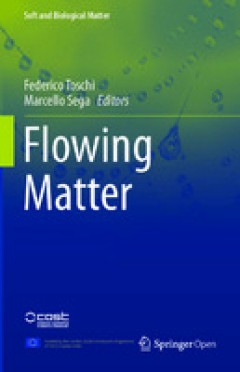
Flowing Matter
This open access book, published in the Soft and Biological Matter series, presents an introduction to selected research topics in the broad field of flowing matter, including the dynamics of fluids with a complex internal structure -from nematic fluids to soft glasses- as well as active matter and turbulent phenomena. Flowing matter is a subject at the crossroads between physics, mathematics, …
- Edition
- Ed. 1
- ISBN/ISSN
- 978-3-030-23370-9
- Collation
- 309
- Series Title
- Soft and Biological Matter
- Call Number
- 543 FLO f

High-Energy Charged Particles Their Chemistry and Use as Versatile Tools for…
This book features comprehensive explanations from the classical theory of high-energy particle interactions with matter to their use for a novel nanofabrication technique for various organic soft materials. Potential readers include scientists and engineers in both academia and industry, as well as students of materials science, nanotechnology, and nuclear power engineering. Readers will learn…
- Edition
- -
- ISBN/ISSN
- 978-4-431-55683-1
- Collation
- X, 74
- Series Title
- -
- Call Number
- 540 SEK h

Computer-based structure elucidation from spectral data : the art of solving …
Here, the authors introduce readers to solving molecular structure elucidation problems using the expert system ACD/Structure Elucidator. They explain in detail the concepts of the Computer-Assisted Structure Elucidation (CASE) approach and point out the crucial role of understanding the axiomatic nature of the data used to deduce the structure. Aspects covered include the main blocks of the ex…
- Edition
- 1
- ISBN/ISSN
- 9783662464021
- Collation
- xvi, 447 pages
- Series Title
- Lecture Notes in Chemistry
- Call Number
- 540
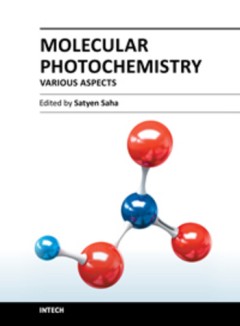
Molecular Photochemistry - Various Aspects
There have been various comprehensive and stand-alone text books on the introduction to Molecular Photochemistry which provide crystal clear concepts on fundamental issues. This book entitled "Molecular Photochemistry - Various Aspects" presents various advanced topics that inherently utilizes those core concepts/techniques to various advanced fields of photochemistry and are generally not avai…
- Edition
- -
- ISBN/ISSN
- 9789535104469
- Collation
- -
- Series Title
- -
- Call Number
- -
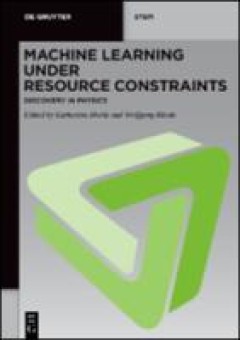
Discovery in Physics
Volume 2 covers knowledge discovery in particle and astroparticle physics. Instruments gather petabytes of data and machine learning is used to process the vast amounts of data and to detect relevant examples efficiently. The physical knowledge is encoded in simulations used to train the machine learning models. The interpretation of the learned models serves to expand the physical knowledge re…
- Edition
- -
- ISBN/ISSN
- 9783110785968
- Collation
- -
- Series Title
- -
- Call Number
- -
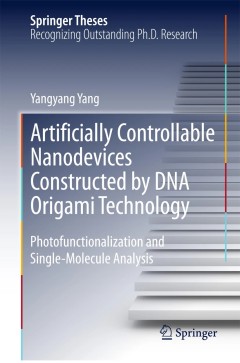
Artificially Controllable Nanodevices Constructed by DNA Origami Technology: …
In this book, the author deals mainly with two topics: (1) single-molecule visualization of switching behaviors in the DNA nanoframe system utilizing different kinds of molecular switches through the use of high-speed atomic force microscope (AFM); (2) construction of photocontrollable DNA nanostructures in programmed patterns and direct visualization of the dynamic assembling process. Here, hi…
- Edition
- Ed. 1
- ISBN/ISSN
- 978-4-431-55769-2
- Collation
- XIII, 76
- Series Title
- Springer Theses
- Call Number
- 620.5 YAN a
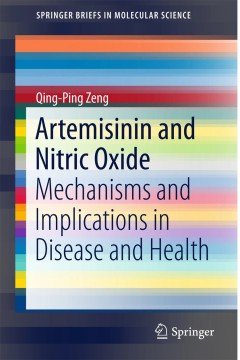
Artemisinin and Nitric Oxide: Mechanisms and Implications in Disease and Health
This book discusses both the beneficial and harmful aspects of NO in biology and medicine, and also introduces the emerging discovery of artemisinin in antitumor, antibacterial infection, anti-inflammation, and antiaging contexts. In 1992 nitric oxide (NO) was voted “Molecule of the Year” by Science magazine, and the discovery of its physiological roles has led to Nobel Prize-winning work i…
- Edition
- Ed. 1
- ISBN/ISSN
- 978-3-662-47688-8
- Collation
- XV, 126
- Series Title
- SpringerBriefs in Molecular Science
- Call Number
- 615.19 ZEN a
 Computer Science, Information & General Works
Computer Science, Information & General Works  Philosophy & Psychology
Philosophy & Psychology  Religion
Religion  Social Sciences
Social Sciences  Language
Language  Pure Science
Pure Science  Applied Sciences
Applied Sciences  Art & Recreation
Art & Recreation  Literature
Literature  History & Geography
History & Geography